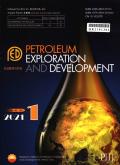Key parameters and evaluation methods for large-scale production of lacustrine shale oil
IF 8
Q1 ENERGY & FUELS
引用次数: 0
Abstract
Based on the analysis of typical lacustrine shale oil zones in China and their geological characteristics, this study elucidates the fundamental differences between the enrichment patterns of shale oil sweet spots and conventional oil and gas. The key parameters and evaluation methods for assessing the large-scale production potential of lacustrine shale oil are proposed. The results show that shale oil is a petroleum resource that exists in organic-rich shale formations, in other words, it is preserved in its source bed, following a different process of generation–accumulation–enrichment from conventional oil and gas. Thus, the concept of “reservoir” seems to be inapplicable to shale oil. In China, lacustrine shale oil is distributed widely, but the geological characteristics and sweet spots enrichment patterns of shale oil vary significantly in lacustrine basins where the water environment and the tectonic evolution and diagenetic transformation frameworks are distinct. The core of the evaluation of lacustrine shale oil is “sweet spot volume”. The key factors for evaluating the large-scale production of continental shale oil are the oil storage capacity, oil-bearing capacity and oil producing capacity. The key parameters for evaluating these capacities are total porosity, oil content, and free oil content, respectively. It is recommended to determine the total porosity of shale by combining helium porosity measurement with nuclear magnetic resonance (NMR) method, the oil content of key layers by using organic solvent extraction, NMR method and high pressure mercury intrusion methods, and the free oil content by using NMR fluid distribution secondary spectral stripping decomposition and logging. The research results contribute supplemental insights on continental shale oil deliverability in China, and provide a scientific basis for the rapid exploration and large-scale production of lacustrine shale oil.
湖相页岩油规模化生产关键参数及评价方法
在分析中国典型湖相页岩油区及其地质特征的基础上,阐明了页岩油甜点富集模式与常规油气的根本区别。提出了湖相页岩油规模化生产潜力评价的关键参数和评价方法。结果表明,页岩油是一种存在于富有机质页岩地层中的石油资源,即在其源层中被保存下来,经历了与常规油气不同的生—聚—富集过程。因此,“储层”的概念似乎不适用于页岩油。在中国,湖相页岩油分布广泛,但在水环境、构造演化和成岩转化格架不同的湖相盆地,页岩油的地质特征和甜点富集模式差异较大。湖相页岩油评价的核心是“甜点体积”。评价陆相页岩油规模化生产的关键因素是储油能力、含油能力和产油能力。评价这些能力的关键参数分别是总孔隙度、含油量和游离含油量。建议采用氦孔隙度测量与核磁共振(NMR)法相结合的方法确定页岩总孔隙度,采用有机溶剂萃取法、核磁共振法和高压压汞法确定关键层含油量,采用核磁共振流体分布二次谱析分解和测井确定游离含油量。研究成果有助于进一步认识中国陆相页岩油的可采性,为湖相页岩油的快速勘探和规模化生产提供科学依据。
本文章由计算机程序翻译,如有差异,请以英文原文为准。
求助全文
约1分钟内获得全文
求助全文

 求助内容:
求助内容: 应助结果提醒方式:
应助结果提醒方式:


